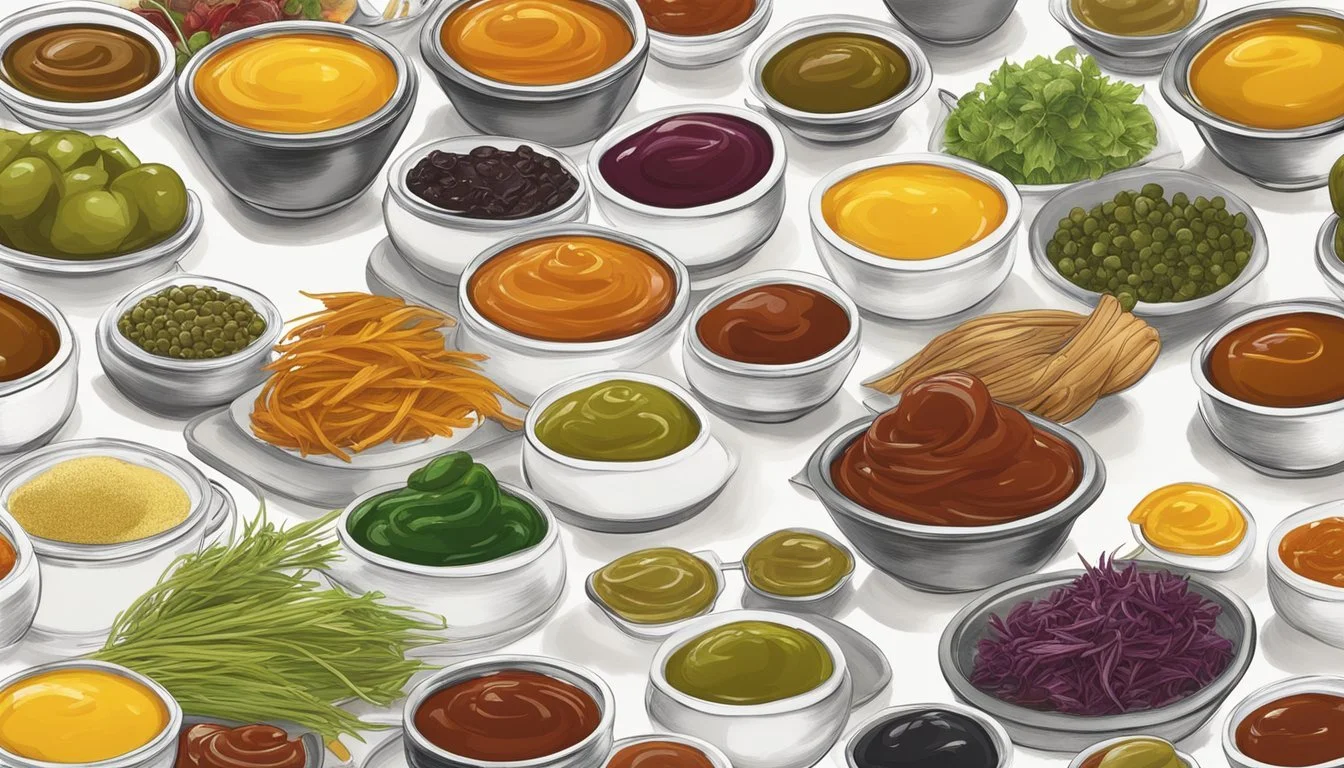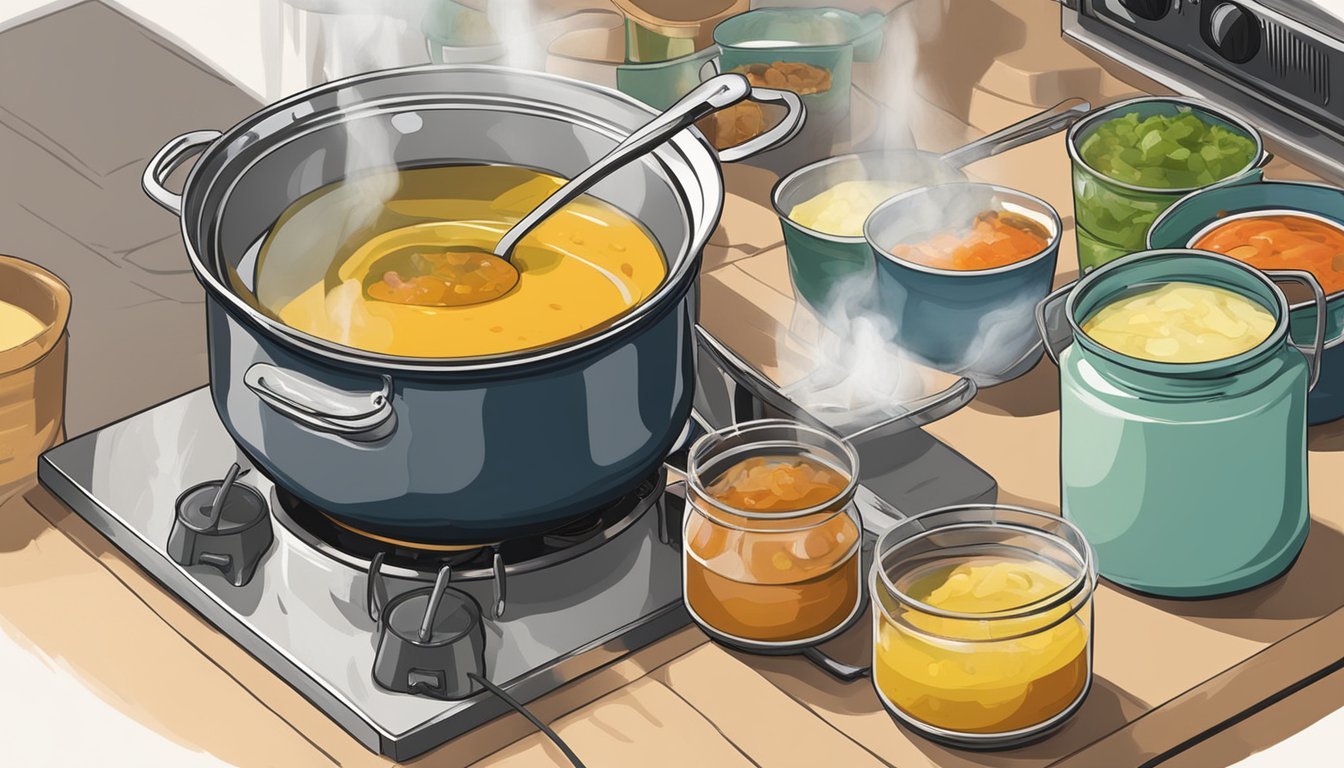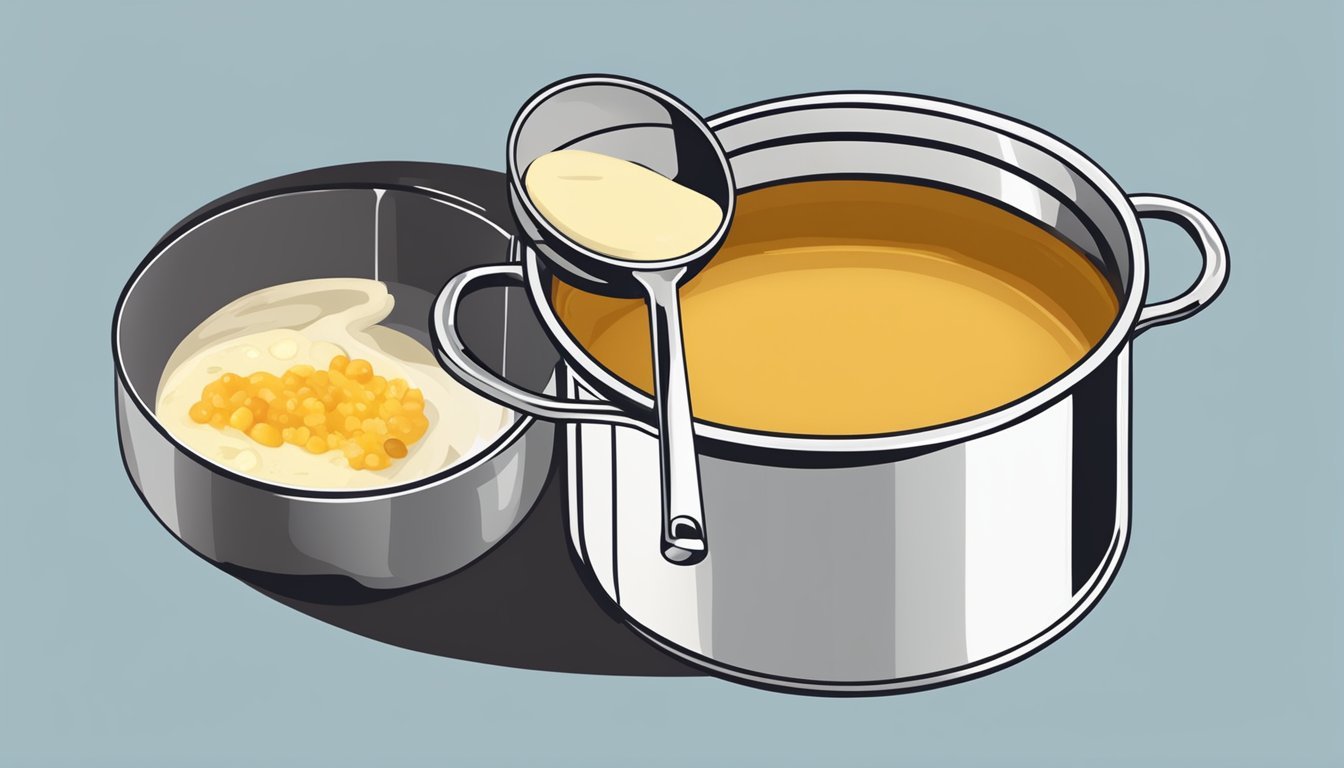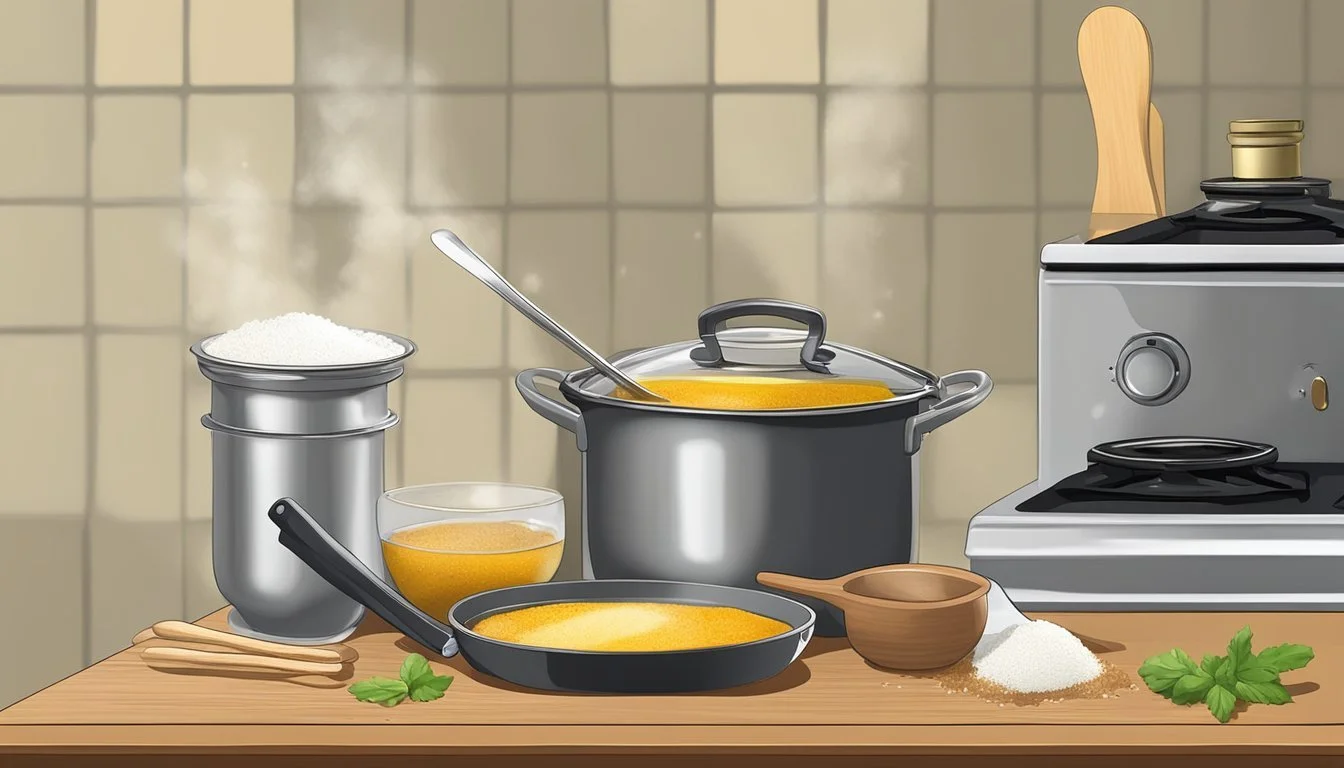Fixing Watery Chutney
Mastering Thickening Techniques for Perfect Condiments
Chutney, a flavorful condiment often used in Indian cuisine, occasionally suffers from being too watery. The consistency of chutney not only affects its texture and mouthfeel but also the intensity of its flavors. A thick chutney clings to foods better and allows its blend of spices, fruits, and herbs to stand out with each bite. Therefore, achieving the right thickness can significantly enhance a dish's overall sensory experience.
Various techniques can be employed to thicken chutney without compromising its taste. A common method involves simmering the mixture to reduce the liquid content, thereby intensifying the flavor while thickening the texture. Ingredients such as cornflour and arrowroot powder are sometimes added as thickeners to expedite the process, especially in situations where extended cooking might affect the chutney's taste or color.
To preserve the integrity of the condiment, knowing when and how to apply these techniques is crucial. Maintaining a balance between the desired consistency and the original flavor profile ensures the resulting chutney complements the foods it is meant to enhance, rather than overpowering them or losing its intended character.
Understanding Chutney: Origins and Varieties
Chutney originates from India, where it is known as "chatni." Historically, it consisted of fresh fruits and spices, serving as a relish to complement a meal. The word 'chutney' derives from the Hindi word 'chatni', stemming from 'chatna', meaning 'to lick' or 'to savor'. Tracing back to 500 BC, chutney was a method to preserve seasonal produce using vinegar, sugar, and spices.
British colonialism played a key role in spreading chutney from India to other parts of the world. As it traveled, the preparation styles and ingredients incorporated into chutney evolved, leading to a plethora of varieties. Today, chutneys are a global condiment enjoyed in various forms.
Key Varieties of Chutney:
Fruit-based: Mango, apple, and apricot are common.
Vegetable-based: Includes tomato, onion, or carrot.
Herb-based: Mint and cilantro are popular choices.
Spice infusion: Often contains a blend of spices like cinnamon, cloves, and ginger.
Distinguishing Features:
Consistency: Can range from chunky to smooth.
Flavor: Balances sweet, tart, and spicy notes.
Use: Accompanies curries, cheeses, and breads.
Understanding chutney's origins equips one to appreciate the rich cultural heritage it carries. Recognizing the varieties helps consumers to make informed choices according to their flavor preferences and the culinary context in which the chutney will be enjoyed.
Key Ingredients in Chutney Making
The creation of chutney hinges on a balance of key ingredients that contribute a unique blend of flavors, textures, and preservative qualities. From the base fruits and vegetables to the sweeteners and spices, each component plays a crucial role.
Fruits and Their Roles
Fruits are the cornerstone of any chutney, offering natural sweetness and pectin, which helps in the thickening process. Commonly used fruits include:
Mango: Adds a tropical, juicy sweetness.
Apricot: Provides a tart and sweet flavor, often used in dried form.
Lime: Contributes tanginess and aids in preservation due to its acidity.
Vegetable Contributions
Vegetables add both body and varying flavors to chutney. Significant vegetables include:
Tomatoes: Offer a robust base with both sweet and acidic notes.
Onions: Bring a sweet depth when caramelized and a pungent sharpness when raw.
Garlic and ginger: These aromatic ingredients infuse the chutney with pungency and heat.
Sweet and Tangy Components
Balancing the sweetness and tanginess is essential for a well-rounded flavor profile. Ingredients in this category are:
Sugar: Acts as a sweetener and helps the chutney reach the desired consistency.
Vinegar: Provides acidity, which balances the sweetness and acts as a preservative.
Tamarind and raisins: Both add a distinct tartness and sweetness to the palate.
Aromatic Spices and Flavors
Spices are the backbone of chutney's complexity and can be adjusted according to taste preferences. They may include:
Cumin or mustard seeds: For a nutty bite.
Cinnamon or cardamom: For sweet warmth.
Chilies (green or dried): Add heat which can contrast or complement the sweet fruit base.
Basic Chutney Preparation Techniques
Preparing chutney involves careful cooking and flavor balancing to achieve the right consistency and taste. Understanding these techniques is crucial for making homemade chutney that stands out both in texture and flavor.
Cooking Down the Ingredients
The first step in chutney preparation is cooking down the ingredients. This typically involves:
Combining fruits and/or vegetables with ingredients like vinegar, sugar, and spices in a large pot.
Bringing the mixture to a boil and then reducing the heat to let it simmer. This process concentrates the flavors and evaporates excess liquid, which thickens the chutney.
The cooking duration can range from 90 minutes to a few hours, depending on the recipe and desired thickness.
Balancing Flavor and Texture
Achieving the ideal balance of flavor and texture is essential for a successful chutney. Consider the following:
Careful measurement of vinegar and sugar impacts not only the flavor but also the preservation qualities of the chutney.
Adjusting spices and seasonings as the chutney cooks is key to a well-rounded flavor profile.
If the chutney remains too thin after adequate simmering, one can stir in a thickening agent like cornflour mixed with water to reach the desired consistency.
By following these basic preparation techniques, one can ensure their chutney has the homemade quality and refined taste expected from a carefully crafted recipe.
Identifying Common Consistency Issues
When it comes to chutney, consistency is key. A perfect chutney has a thick and rich texture. However, various factors can lead to a watery or runny consistency, which is often viewed as less than ideal by culinary enthusiasts.
Common Causes for Watery Chutney:
Excess Liquid: Excessive juice from fruits or vegetables.
Undercooking: Not cooking the mixture long enough for natural pectins to work.
Ingredient Ratios: Imbalance between dry and wet ingredients.
Addressing these issues involves assessing the cooking process and the ratio of ingredients. A thickener may be introduced if necessary. When identifying such issues, consider the following:
Texture: A chutney should hold its shape when served, not spread too thinly.
Viscosity: The sauce should coat the back of a spoon without dripping off quickly.
Taste Test: Sometimes, thickness affects flavor; a taste test might be telling.
Observers should note the chutney's response to a stir. If it is too thin, it will settle quickly and spread out. This can be corrected, but identifying the cause is the first step. Furthermore, a runny chutney might lack the depth of flavor expected in a well-reduced condiment.
Effective solutions begin with the proper diagnosis of the problem. Once the issue is pinpointed, measures such as extended cooking or the introduction of a thickener can be taken. Understanding and identifying consistency issues is crucial for the successful preparation of chutney.
Review of Thickening Agents and How They Work
In crafting the perfect consistency for chutneys and spreads, understanding the mechanism of different thickening agents is paramount. These agents stabilize and increase viscosity, transforming a watery mixture into a luscious and desirable texture.
Starch-Based Thickeners
Starch-based thickeners are popular for their ability to absorb water and swell, thereby thickening the mixture. The most common examples include:
Cornstarch: A potent thickener that creates a glossy finish. It is mixed with cold water to form a slurry before being added to the chutney to avoid clumping.
Flour: Principally used in making a roux, it requires cooking with fat to eliminate the raw taste. Wheat flour is a versatile thickener that imparts a slightly opaque finish.
Fruit-Based Thickeners
Fruit-based thickeners leverage the natural pectin found in high concentrations within certain fruits. Pectin is an excellent gelling agent, commonly employed in jams and jellies.
Pectin: A fiber found in fruit peels and cores that gels when combined with sugar and acid. It provides a smooth texture without altering flavor significantly.
Nut and Seed Thickeners
Nuts and seeds offer a dual purpose by thickening and adding a dimension of flavor to the condiment.
Cashews: Ground into a paste, cashews are a creamy thickening option for chutneys. They offer a rich texture and are ideal for dairy-free alternatives.
Mustard Seeds: Though not commonly thought of as a thickening agent, mustard seeds can thicken condiments by forming a mucilaginous layer when soaked in water, adding to the overall texture.
Practical Thickening Techniques for Chutney
When chutney turns out too watery, certain techniques can effectively thicken the mixture, enhancing both texture and flavor. These methods leverage the principles of reduction, ingredient addition, and cooking adjustments to achieve the desired consistency.
Reduction and Evaporation
Reduction is a natural and simple way to thicken chutney by evaporating excess liquid. To do this, one should simmer the chutney over low heat, which allows water to evaporate without compromising the ingredient integrity. This is best achieved in a wide pan, as the increased surface area promotes quicker evaporation.
Addition of Thickening Ingredients
Thickeners can be incorporated into chutney to expedite the thickening process. Common thickeners include:
Cornflour: Mix with water to create a slurry, then blend into the chutney.
Arrowroot: A finer, gluten-free option similar to cornflour.
When using thickeners, it's essential to mix them with an equal amount of water before adding to the chutney to prevent lumps.
Adjusting the Cooking Process
Altering the cooking process can also result in a thicker chutney. This involves:
Boiling aggressively at first then reducing to a simmer ensures that the fruits and vegetables break down properly, releasing their natural pectins which thickens the condiment.
Using the correct-sized pan can also affect water retention; a too-small pan can prevent evaporation and lead to an overcooked flavor.
By applying these techniques, one can effectively manage and correct the consistency of their chutney, ensuring it complements dishes as intended.
Advanced Chutney Thickening Methods
In this section, readers will learn about sophisticated techniques to achieve the desired consistency in chutney. These methods are geared towards those looking to optimize their recipes with precise thickening agents and techniques.
Utilizing Pectin and Gelatin
One can introduce natural gelling agents such as pectin or gelatin to thicken chutney. Pectin, found in the cells of many fruits, is particularly effective. It requires sugar and acid to set properly, thus, it is most suitable for fruit-based chutneys. On the other hand, gelatin, derived from animal collagen, can create a firm texture, but it is less common in chutney recipes.
Method Overview:
Pectin: Combine with chutney ingredients and boil until it thickens
Gelatin: Dissolve in water, mix into chutney, and cool until set
Creating a Reduction
Another method is reducing the chutney through prolonged simmering. This concentrates the flavors and evaporates excess water, leading to a thicker consistency. Attention must be paid to ensure that the chutney does not overcook, which could result in a loss of flavor or a burnt taste.
Steps for Reduction:
Simmer the chutney over low heat.
Stir occasionally to prevent sticking.
Remove from heat once desired thickness is achieved.
Innovative Culinary Thickeners
Culinary experts often resort to modern thickeners to control consistency precisely. Ingredients like cornflour, arrowroot, or guar gum can offer added control without altering the taste or appearance significantly. These thickeners must be used sparingly to avoid an overly gummy texture.
Thickener Comparison:
Thickener Usage Notes Texture Impact Cornflour Mix with water to form a slurry before adding. Velvety Arrowroot Similar to cornflour, causes less cloudiness. Light and clear Guar Gum Very potent, use in small quantities. Smooth and firm
When using these thickeners, one should always follow their specific chutney recipes and make adjustments as needed to ensure the perfect consistency is achieved.
Storing and Preserving Thickened Chutneys
Preserving the consistency and flavor of thickened chutneys is crucial for long-term storage. One must carefully seal and can the chutney and monitor the storage conditions to maintain quality.
Proper Sealing and Canning
To ensure longevity, one should sterilize all jars before filling them with chutney. Place the jars in boiling water for at least 10 minutes and use tongs to remove them, handling the jars with care. Once the chutney is filled into the jars, leaving appropriate headspace, they must be sealed tightly. A water bath method can be used for canning, immersing the sealed jars in boiling water for the time recommended for the chutney's acidity level.
Shelf Life and Storage Conditions
Thickened chutneys should be stored in a cool, dry place such as a pantry, away from direct sunlight and heat sources. The ideal storage temperature lies between 40°F (4°C) and 50°F (10°C). Under these conditions, properly canned chutneys can have a significant shelf life, often extending over several months. If the seal remains intact and the chutney shows no signs of spoilage—such as mold or off smells—it remains suitable for consumption.
Serving Suggestions for Thickened Chutneys
Thickened chutneys offer a burst of flavor and texture that can enhance a variety of dishes. They make for versatile accompaniments that can pair well with cheese and crackers, act as a robust spread or condiment, and even enrich marinades and gravies with their intensified taste.
Pairing with Cheese and Crackers
When serving cheese and crackers, a thickened chutney can act as a delightful counterpart to the creamy and sometimes salty flavors of cheese. Here are ideal cheese pairings:
Aged Cheddar: The sharpness complements fruity chutneys.
Gouda: Smoked or aged Gouda balances well with a spicy chutney.
Parmesan: A tangy tomato chutney cuts through the rich umami of Parmesan.
Crackers should be chosen to provide a crunch without overshadowing the chutney's flavor. Opt for plain or sea salt varieties for the best experience.
Using as a Spread or Condiment
Thickened chutney's versatility shines as a spread on sandwiches and wraps or as a condiment to elevate everyday meals. It is particularly effective in:
Sandwiches: A layer of chutney adds moisture and a punch of flavor.
Burgers: Replace the usual relish with a spoonful of spicy chutney for a tangy twist.
Breakfast Items: An occasional swap for jam on toast, bagels, or English muffins.
In all cases, the chutney should compliment the main ingredients rather than overpower them.
Incorporation into Marinades and Gravies
The concentrated flavors of thickened chutney can deeply infuse meats and add complexity to gravies. Use the following guidelines:
Marinades: Mix chutney with oil, vinegar, or yogurt to marinate chicken or pork before grilling or roasting.
Gravies: Stir a spoonful into gravies for an unexpected depth of flavor and an enhanced color and gloss.
Incorporating chutney into marinades and gravies should be done thoughtfully, ensuring that the spices and sweetness level suit the final dish.
Tips and Tricks for Perfect Chutney Every Time
When crafting chutney, consistency is key for a thick, spreadable condiment. One should start by simmering the mixture for an adequate amount of time. A simmer over low heat allows water to evaporate, which contributes to a thicker texture. If after simmering, the chutney remains watery, incorporating a thickening agent such as cornflour can help achieve the desired consistency. It's important to blend the cornflour with a small amount of cold water before adding it to the chutney to avoid clumps.
Balanced flavor is crucial in chutney making. Below are some tips to avoid common flavor pitfalls:
Flavor Issue Solution Too tangy Balance acidity with a sweet ingredient, like sugar or fruit. Too bitter Counteract with a touch of sweetness or spice. Lacking savory depth Incorporate umami-rich elements like roasted nuts or spices.
To maintain the desired texture, chefs can choose to blend their ingredients to the preferred level of smoothness or chunkiness. Here are some pointers relevant to texture:
Chunky chutney: Pulse ingredients in a food processor to control the size of the chunks.
Smooth texture: Continue to blend until the ingredients form a uniform paste.
Tricks to enhance the chutney include:
Using high-quality, fresh ingredients.
Experimenting with spices such as ginger, cinnamon, cumin, or cardamom.
Remember to let the chutney cool after cooking to allow it to further thicken and for flavors to meld. When storing, use airtight containers to preserve freshness and prevent contamination.









